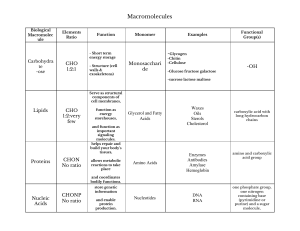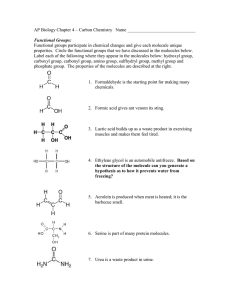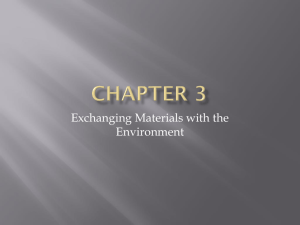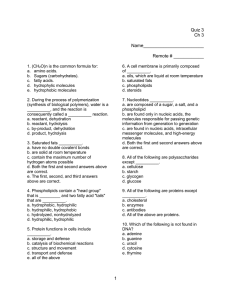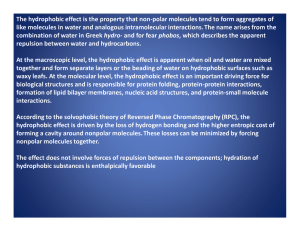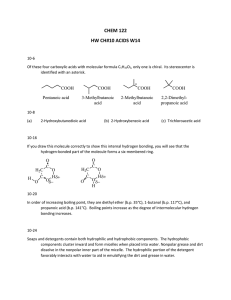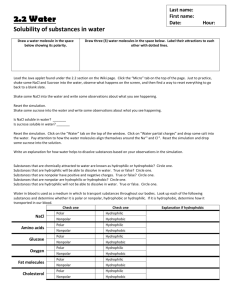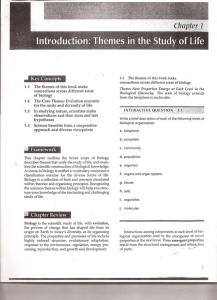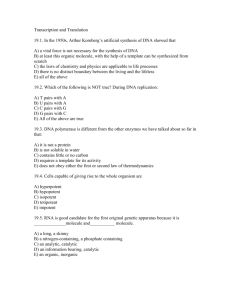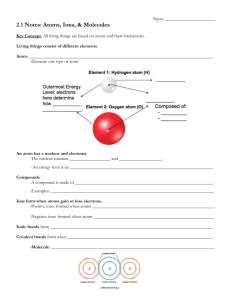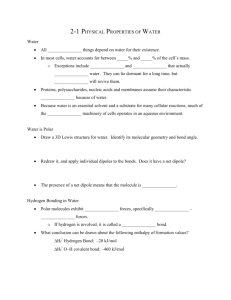Ch 2 Answers to Applying and Data Questions
advertisement
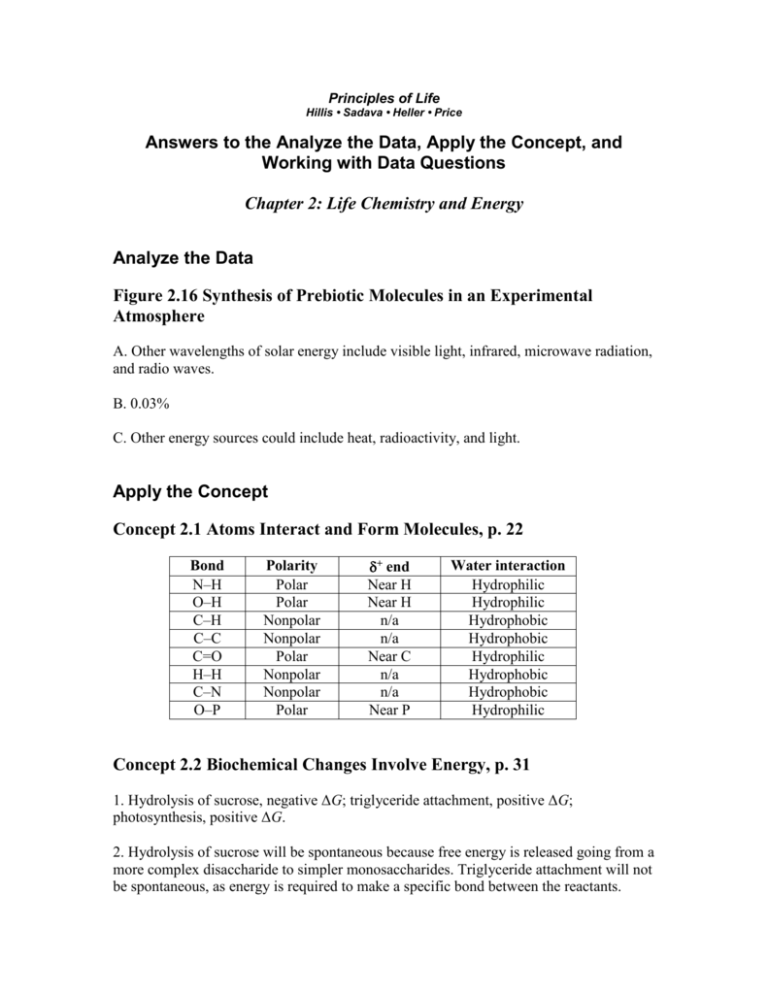
Principles of Life Hillis • Sadava • Heller • Price Answers to the Analyze the Data, Apply the Concept, and Working with Data Questions Chapter 2: Life Chemistry and Energy Analyze the Data Figure 2.16 Synthesis of Prebiotic Molecules in an Experimental Atmosphere A. Other wavelengths of solar energy include visible light, infrared, microwave radiation, and radio waves. B. 0.03% C. Other energy sources could include heat, radioactivity, and light. Apply the Concept Concept 2.1 Atoms Interact and Form Molecules, p. 22 Bond N–H O–H C–H C–C C=O H–H C–N O–P Polarity Polar Polar Nonpolar Nonpolar Polar Nonpolar Nonpolar Polar + end Near H Near H n/a n/a Near C n/a n/a Near P Water interaction Hydrophilic Hydrophilic Hydrophobic Hydrophobic Hydrophilic Hydrophobic Hydrophobic Hydrophilic Concept 2.2 Biochemical Changes Involve Energy, p. 31 1. Hydrolysis of sucrose, negative ΔG; triglyceride attachment, positive ΔG; photosynthesis, positive ΔG. 2. Hydrolysis of sucrose will be spontaneous because free energy is released going from a more complex disaccharide to simpler monosaccharides. Triglyceride attachment will not be spontaneous, as energy is required to make a specific bond between the reactants. Photosynthesis will not be spontaneous, as energy is required to make many specific bonds. Working with Data 2.1 Synthesis of Prebiotic Molecules in an Experimental Atmosphere (Figure 2.16) 1. (See Analyze the Data for Figure 2.16 above.) 2. Aspartic acid, glycine, and alanine (see p. 40, Table 3.2). 3. A. Glycine, alanine, aspartic acid, and glutamic acid. B. Lactic acid is the end product of glucose catabolism in the absence of oxygen (see p. 110, Figure 6.13). Urea is a product of catabolism of nitrogen-containing molecules such as proteins and nucleic acids. It accumulates and is excreted in mammals, amphibians, and some fishes (see p. 787, Figure 40.2).
